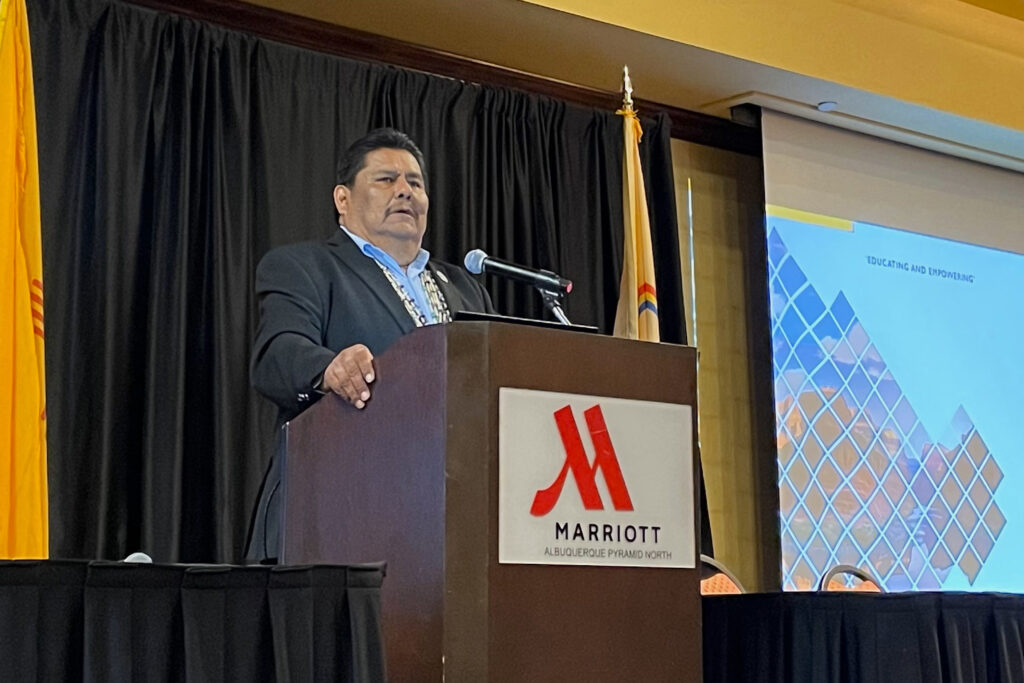Navajo Nation Navigates Challenges in Transition from Fossil Fuels to Renewable Energy
The Navajo Nation’s shift from fossil fuel production to the generation of renewable energy is encountering various obstacles. A three-day conference was recently held, attended by tribal and chapter government officials, energy companies, nonprofit organizations, and others. The event examined the tribe’s interaction with energy production in the past and the challenges faced in redefining this relationship, including capitalizing on financial incentives introduced by the Biden administration for renewable energy development.
Mike Halona, executive director of the tribe’s Division of Natural Resources, stressed the urgency of the situation, saying, “From my perspective, we have one shot, and this is it… How can we solidify, when we leave here, a good common goal to be able to make these projects happen?”
Upon taking office in January 2023, Navajo Nation President Buu Nygren prioritized the exploration of energy development. The ultimate goal is to address the needs of the Navajo people. The Navajo Nation has a long history with the extraction of natural resources, including coal, oil, gas, helium, sand, and gravel from its land for the past century.
With coal production revenue declining since the early 2000s due to various mine closures, the tribe has been seeking new sources of income. In 2020, oil production also dipped due to the COVID-19 pandemic but has since rebounded, as reported by Rowena Cheromiah, minerals department director.
The U.S. Department of Energy Office of Indian Energy Policy and Programs aims to foster tribal energy development, bolster tribes’ energy and economic infrastructure, and help bring electricity to tribal lands and homes. It is headed by Wahleah Johns, a Diné from northeast Arizona, who was appointed to the role by the Biden administration in 2021.
The federal government and the Navajo Nation have signed a memorandum of understanding to facilitate the tribe’s access to federal funding. This funding would aid the tribe’s transition to clean energy and its efforts to rejuvenate their economy. The Hopi Tribe, also impacted economically by coal mine closures, has a similar MOU with the federal government.
Solar development is underway over the Navajo’s 27,000 square miles of land, with independent operators installing standalone solar systems in homes. However, as of last year, 21 percent of homes on the Navajo Nation still lack electricity. The Navajo Tribal Utility Authority, a tribal enterprise, has built two solar farms, with further sites under development. Other active projects include helium production sites and potentially a hydrogen pipeline crossing the Navajo Nation, proposed by Tallgrass Energy through its subsidiary GreenView.
The Navajo tribal council adopted its first energy policy in 1980, which was revised and replaced in 2013. The policy covers exploration, development, sustainable management, and the use of the tribe’s energy resources. It also called for the establishment of an energy office, which has not yet been realized. This lack of structure has led to confusion about project proposals and which companies to approach with project ideas, leading to calls for another review of the policy.
Another area of concern for the tribe is remediation, or cleanup of abandoned uranium mines and orphaned oil and gas wells. As the Navajo Nation continues to shift towards renewable energy, it’s clear that this transition involves not only the implementation of new projects and technologies but also the resolution of longstanding environmental issues.
Original Story at insideclimatenews.org
